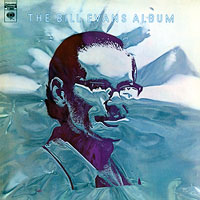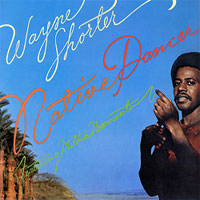Bill Evans • The Bill Evans Album
Wayne Shorter • Native Dancer
t's ironic that the early 1970s was a time when American filmmaking approached an apotheosis, while jazz, which featured prominently in the soundtracks of many of the greatest films of the era, struggled to remain relevant. Two jazz artists who survived the crushing blow delivered by pop music in the 1960s, and perhaps were made stronger by it, were Bill Evans and Wayne Shorter. Evans thrived by sticking to his roots -- a piano trio that evolved through a succession of sidemen. Contrasted to Evans’ almost micro-adjustments to form, Shorter switched styles dramatically. However, unlike much of the jazz fusion recorded by artists looking to capture the youth-driven music market, Shorter helped create some of the freshest-sounding music of the 1970s, music that holds up well in the 21st century. Bill Evans’ prime recording period was 1958 through 1961, during which he recorded his classic Riverside sessions with Scott LaFaro and Paul Motion, and appeared as a sideman on such classics as Kind of Blue and The Blues and the Abstract Truth. Many record collectors stop right there, but music lovers cherish Evans’ work after Scott LaFaro’s death, despite the fact that he moved on to less-collectable labels. In 1966, Evans brought in Eddie Gómez as his bassist, and over the next decade he recorded many of his best albums, winning numerous Grammy Awards in the process. Among these is The Bill Evans Album on Columbia, with Gómez and Marty Morrell on drums. Evans tips his hat to the 1970s by playing both a Steinway piano and Fender Rhodes electric piano. Playing a set of entirely self-penned originals, Evans for the first time integrates the Fender Rhodes sound into his piano trio. He does so without being trendy, sounding all the world as if piano trios had always used electric piano. The session was recorded at Columbia's 30th Street Studio in mid-1971 by engineer Pete Weiss, and the sound captured, as remastered by Speakers Corner, represents some of Columbia’s best work of the period. Like Evans, Wayne Shorter spent the 1960s recording a series of masterpieces, including his classic Blue Note releases and his appearance as a sideman with the Miles Davis Quintet. How could Shorter possibly match this going forward? One response was to become part of Weather Report, a jazz super group that released an album a year throughout the 1970s, setting the bar for great jazz-fusion music. Shorter also continued recording as a solo artist, and Native Dancer was his first LP cut for Columbia after leaving Blue Note in 1970 (the 1974 Blue Note release Motto Grosso Feio had been recorded in 1970). The 1974 session is one of Shorter’s best albums, but it was also the last really great solo album he cut for nearly twenty years. Instead, he focused his efforts on Weather Report, touring with V.S.O.P (a Miles Davis throwback group), recording albums with Joni Mitchell, and the odd sideman job with Santana and Steely Dan. Like the Weather Report albums, Native Dancer is heavily informed by Brazilian music. Weather Report member Airto Moreira joins Herbie Hancock and other lesser-known sidemen, but it’s Brazilian superstar Milton Nascimento who sets the tone for the album, writing half the songs, playing guitar and adding vocals. There is not a moment that is not exciting on this album, and it belongs among any top-ten list of essential Shorter releases. Native Dancer was recorded at Village Recorders in Los Angeles by Robert Fragoni and mastered by Wally Traugott at Capitol Recording Studios, and the sound is quite good. Indeed, for those familiar with the disappointing sonics of Shorter’s musically excellent CDs on Verve, this will sound like an audiophile recording. Columbia does not lend out its master tapes to European
labels like Speakers Corner, so it’s safe to assume that both of these reissues
derive from tapes at least one step removed from the masters. The early 1970s were not the
apex of mastering or pressing at Columbia -- or most other record labels. Comparison to
originals of both releases suggests that little or nothing was lost in the process.
Indeed, comparing Native Dancer to both a white-label promo and to an original test
pressing, I hear little difference, with the exception that the beautiful disc from
Speakers Corner is a much quieter pressing. |


